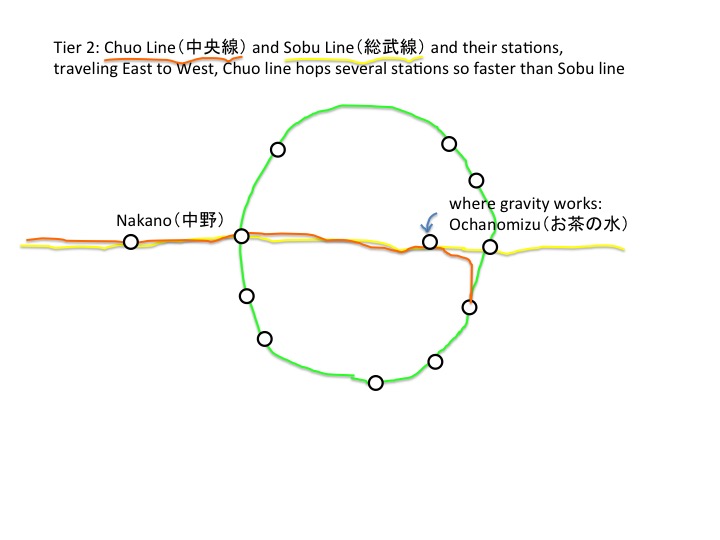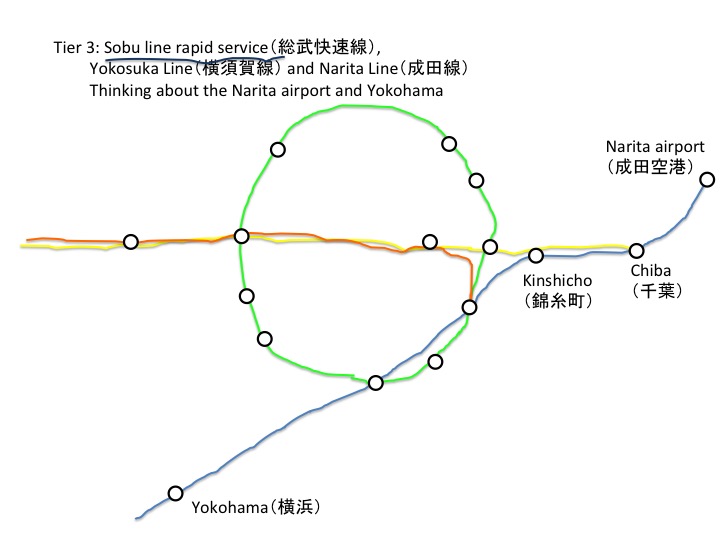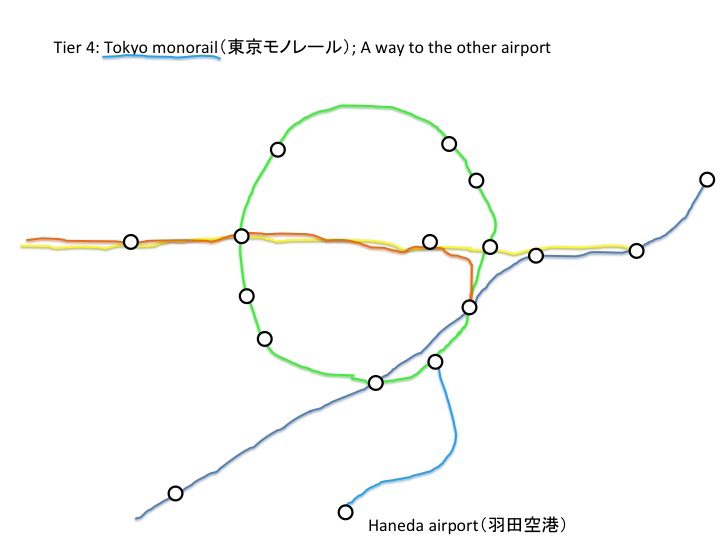Hi,
I apologize for delayed post.
In the former post, I believe you guys can access to/from the two airports, and can travel across the metro Tokyo area.
Tier 6: Keihin-Tohoku line and Saikyo line
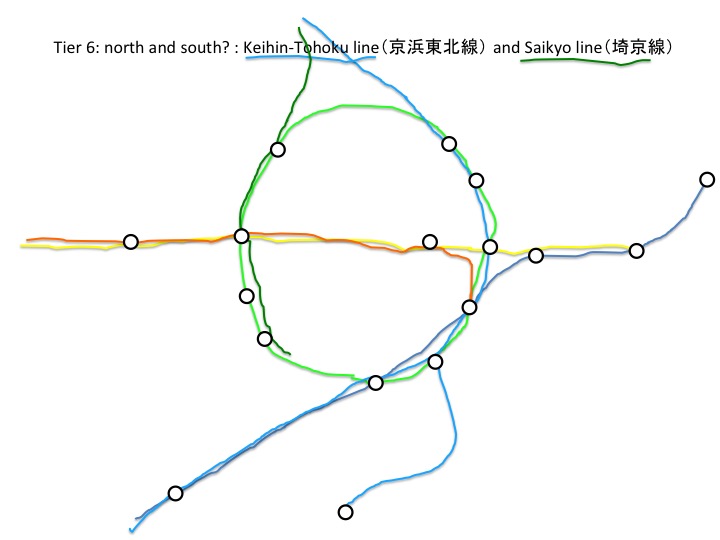
A lot of business people need to live not in metro Tokyo area, rather than in suburbs. So much neccesity evolved to establish train lines to/from the north and the south.
Keihin-Tohoku line (displayed in cyan) is one of them. They runs from the north to the south (off course, vise versa). Also off course, they hop several station compared to Yamanote(light green) line. The line is valuable is you want to go especially the south, like Yokohama and Kawasaki.
Saikyo line(deep green line) is another choice. Saikyo means the mixture of Saitama and Tokyo, so you can imagine where the line runs. Off course, the purpose of the train is to carry a lot of bussinessperson to/from Saitama to Tokyo central. If you want to visita Saitama prefecture, this line is a choice.
Tier 7: Faster way??
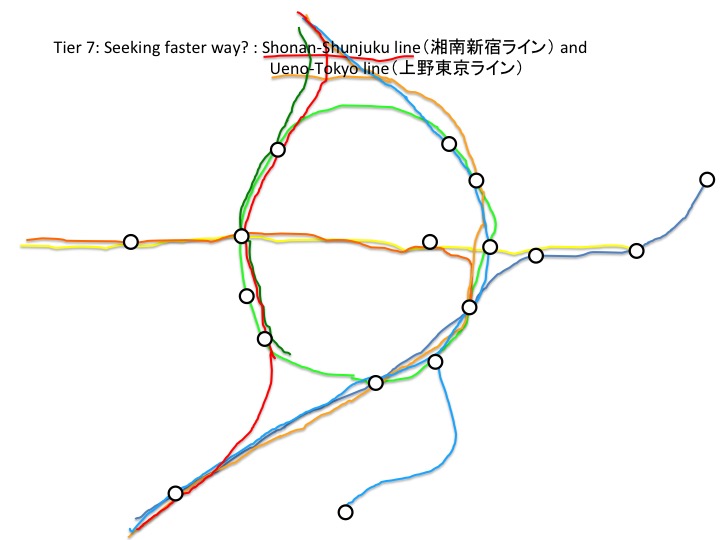
I am sorry I do not use these lines as usual.
In the JR era (after 1987, before the year, these lines had been operated by Japan Government), a lot of new “RAIN (=lines)” had beed established because of the business in commuter trains. These two lines had been born based on there needs. These line run to/from the north from/to the south, sharing the same stations and hops some stations.
Ueno station has been famous for the starting point for the northern Japan, such as Sendai, Aomori and so on.
Tier 8: Potential need for accessing the airport
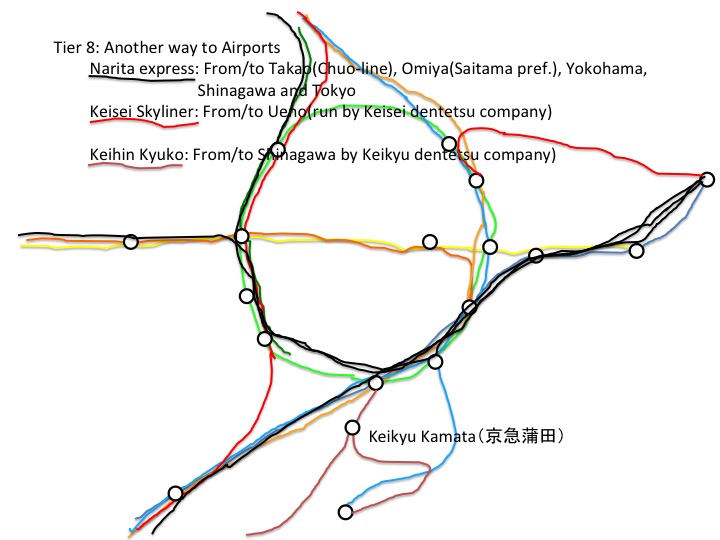
N’ex or Narita expresses are the express trains especially for those who want to go to/come from Narita airport. JR made a lot of originating stations, such as Takao, Omiya, Yokohama, Shinagawa and Tokyo. Even they stop at Shinjuku station. You can see JR uses special train for N’ex, so it is easy to see what N’ex. Simply, the express trains run by JR to Narita airport are Narita express.
All seats on N’ex are reserved. HOWEVER, IF YOU MISSED TRAIN AND/OR THE TRAINS ARE DELAYED OR SUSPENDED BY ANY REASONS, YOU CAN TAKE THE EARLIEST N’EX TRAIN TO/FROM THE AIRPORT WITHOUT THE SEATS(OR USE EMPTY SEATS) USING YOUR ORIGINAL TICKET. Don’t wait for your reserved trains/seats if the train delayed a lot (mainly due to the weather issue… I believe the punctuality of trains in Japan haha). I checked this in several official JR websites.
Another private companies, such as Keisei(京成)and Keikyu(京急)manage trains to/from Narita and Haneda respectively.
For next step, I will try the most complex subway system in metro Tokyo area. Keep tuned! My idea to explain the system is to explain the history of subway system in Japan, and the shallowness/deepness of the lines, however, I need to study a lot… Please let me know if you guys have ideas about it!
(The bottom line is to use Google map. It is SO useful to utilize the metro in Tokyo)
Enjoy your stay in Tokyo. Hope you guys meet me somewhere in Japan.
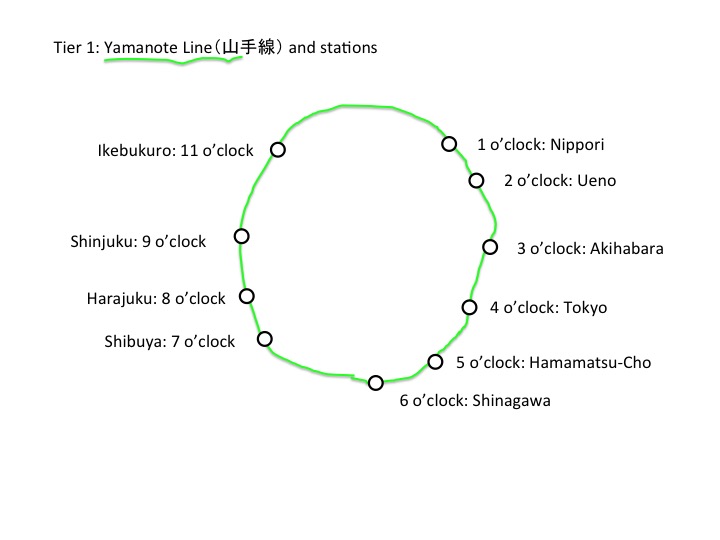 At first, draw a circle in green and put some station names. I believe these stations are very important for tourists. Basically you can trip wherever around Tokyo area by using Yamanote line.
At first, draw a circle in green and put some station names. I believe these stations are very important for tourists. Basically you can trip wherever around Tokyo area by using Yamanote line.